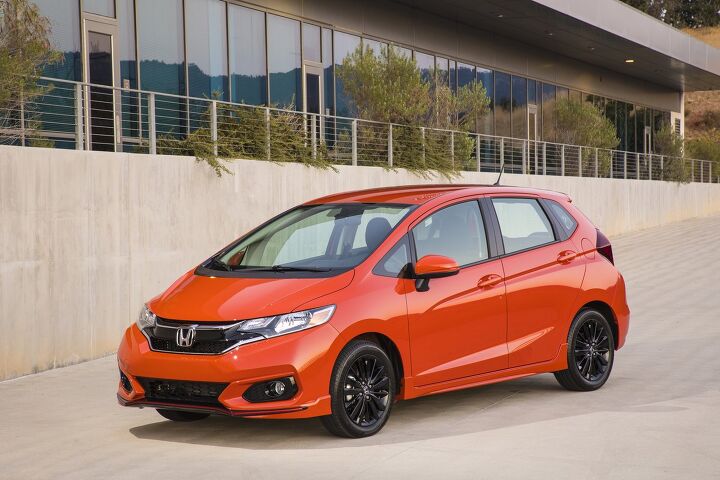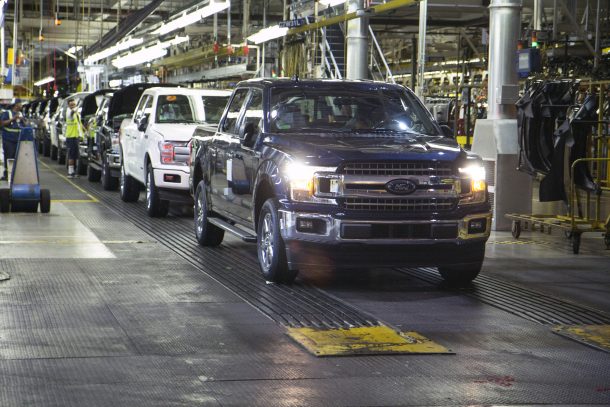#AutoLoans
Subprime Auto Loans Show Increasing Signs of Trouble
We thankfully seem to be coming out of some of the economic challenges brought on by the pandemic, but a new crop of financial hardships is on the horizon. Subprime auto loans, which are issued to people with lower credit scores, are falling into past-due status at an alarming rate, reaching the highest rates of borrowers behind on loans in almost 30 years.
Report: Auto Loan Rejections Are Up and Poised to Keep Increasing
With dealer lots starting to fill back up with product after years of lean inventories that encouraged salespeople to ask for absolutely ludicrous prices, the Federal Reserve has found that lenders are declining would-be borrowers at a record-setting pace.
The reasons for this are many. Annual percentage rates have come up, requiring consumers to pay more money over time that lenders just aren’t certain they’ll see a return on. More people are also defaulting on loans across the board and inflationary pressures are poised to make the issue worse since the dollar just doesn’t go as far as it used to.
QOTD: Are You Worried About Auto Loans?
We reported on auto-loan delinquencies yesterday since they're at a record high, though subprime loans are the biggest cause for concern.
Auto Loan Delinquencies Reach Record Levels
Delinquencies on automotive loans have surpassed the recession-era highs witnessed in 2009, according to an assessment released by S&P Global Mobility on Monday. Fortunately the wealthy will be largely unaffected by this trend, as the issue is isolated primarily to subprime borrowers. For some strange reason, people with more money are having less trouble paying their bills on time.
Americans Are Falling Behind On Auto Loans at an Alarming Rate
The economy hasn’t tumbled into the massive recession that some predicted, but there are signs of trouble brewing in the automotive lending industry. At the end of last year, more subprime borrowers were 60 days or more behind on their auto loans than at any point since the Great Recession in 2009.
Wells Fargo Pays $3.7 Billion in Settlement
Wells Fargo is facing down a hefty settlement and fine because the bank mismanaged accounts, including auto loans.
Car Loan Delinquencies Keep Increasing, Who Is to Blame?
Not that you couldn’t have figured this one out all by yourself, but car loan delinquencies are reaching record levels once again. The culprits are the usual suspects. Wages have failed to keep pace with inflation for a couple of generations, current inflation rates are at record highs, and those loan-accommodation programs set up during the pandemic are all expiring now. Basically, regular people are becoming broke so they’re starting to be forced into tough financial decisions – including whether to make their car payments against heating their homes or feeding their families.
Average Automotive Pricing Window Continues Shifting Upwards
Now that fuel prices are popping off and it’s becoming glaringly obvious that we’re falling into another recession, one would hope that automakers would be prioritizing their more economical models. Unfortunately, most manufacturers operating in North America spent the last decade culling the smallest models from their lineup. Domestic brands took the practice so far that several no longer offer traditional cars, opting instead for compact crossover vehicles yielding higher price tags and broader profit margins. Foreign brands were only marginally more reserved with the ax.
This has helped move the average vehicle transaction price beyond $42,000 in the United States, according to Edmunds, with used rates sitting somewhere around $28,000. Though the cause isn’t entirely down to there being a complete lack of econoboxes on the market. Increased regulations and the industry’s newfound obsession with connectivity/tech have also increased pricing. But it doesn’t change the fact that we’re now confronting a situation where almost nobody is selling the kind of small, affordable vehicles that cater to shoppers needing to be thrifty right when they really need them.
Study: Automotive Debt Is Out of Control, You're Being Swindled
Consumer Reports just released the findings of a year-long stud y looking into the latest trends in automotive loans and car payments. The resulting information highlights just how explosive the debt growth has been over the last 10 years and the arbitrary way in which borrowers are now being treated.
Long story short, we’re all being swindled.
With vehicle prices ballooning and the associated loans becoming longer than ever, dealers and lenders seem to be operating whatever way yields the steepest profit margins with only a modicum of consideration being given to the established frameworks designed to act as a guard rail. This has led to U.S. citizens carrying around a record $1.37 trillion in automotive load debt and customers with good credit being treated no different than those that fall into the subprime category. Sadly, the issue appears only appears to be worsening as new economic perils are only making things more expensive. Meanwhile, data from the Federal Reserve Bank of New York is projecting national auto debt to swell to $1.42 trillion by year’s end.
It's Not Just Pricing, Auto Loans Are Also Getting Out of Hand
As you’re undoubtedly aware, now isn’t the best time to purchase a new vehicle. While you can currently sell your ride for more than it’s realistically worth, the economy is anything but stable as inflation and supply shortages gum up the works. A lack of semiconductor chips has caused the automotive industry to stutter endlessly throughout 2021, with the issue getting so bad that some manufacturers have been building unfinished vehicles just to give their employees something to do. Ford is even mulling over a strategy to ship those units directly to dealerships so they’ll have something on the lot — effectively making its retail network responsible for final assembly.
But the logistics nightmare is only part of the story. Automotive loans are also becoming untenable as terms stretch out endlessly. Cars continue getting more expensive and the average consumer is losing their buying power. The preferred solution is for financiers to extend agreements so customers can continue making the same monthly payments while accruing more on interest over the duration. While effective in the short term, and bound to make banks money as we’re all driven deeper into debt, one wonders how this plays out on a grander scale.
Subprime Auto Market Looking Extra Rough in 2021
The subprime auto market looks to be in poor health as the number of borrowers with outstanding loans that are more than 60 days overdue continues increasing. While the number has a tendency to rise and fall between seasons, the general trend toward indebtedness has been going up since 2015, with increasingly more customers boasting lackluster credit scores becoming incapable of footing their transportation bill.
Delinquencies skyrocketed in 2020, as government lockdowns pushed many out of work and now appear to be increasing due to a recovery plan that primarily seems to be serving cooperate interests and the wealthiest socioeconomic classes. Though it should be said that middle and lower-class families had been losing ground for decades, at least according to the latest Pew Research data. Pandemic-related complications only served to accelerate the existing financial disparities on all fronts. We are now on course for poorer people to have even less money moving forward, especially in the world’s most developed countries.
I wonder why so many people are defaulting on their car loans…
Ford Follows GM's Financing Lead, but Not Entirely
We told you earlier this week how the month of June brought changes to General Motors’ pandemic-era financing offers. No longer is the automaker tempting buyers with zero-percent, 84-month loans on nearly everything in its lineup.
Over at Ford, it seems the same strategy is underway… with one very notable exception. Whether or not you can actually benefit from it, however, remains a matter of location and persistence.
Everyone's Doing It: Toyota Joins the Club, Slashes Rates
When venturing out of the home carries an extra degree of danger, automakers know there needs to be a reward for breaking self-isolation. Even if physically entering a dealership isn’t necessary, there’s still the current economic uncertainty to dissuade customers.
As we told you yesterday, U.S. auto sales are on the rebound, slowly rising from the rock-bottom position reached less than a month ago. While per-vehicle incentives are, on average, on the decline (the byproduct of a smaller pickup slice in the retail mix), discounts aren’t the only way to lure customers into a buy. There’s also loan rates — and it seems Toyota has finally arrived at that party.
Report: Subprime Buyers Not Paying Auto Loans
As the resulting complications of coronavirus lockdowns obliterate the economy, reports have emerged that subprime car buyers are beginning to skip payments. Delinquencies were expected to come up a bit this year, even before local governments started issuing lockdown orders, but the swift economic impact of these health initiatives have proven wider-reaching than anyone anticipated.
Normally, the status of the more volatile subprime market is a useful tool in assessing the financial well-being of the country as a whole — sort of an early warning device for economists. However, getting an accurate read on who stopped paying could be hard during the pandemic. Many lenders are offering deferral programs to keep one or two delinquent payments from turning into full-blown defaults. Still, the initial signs are about what you’d expect, and it plants another economic red flag into American soil.
As ATPs Rise and Loan Terms Grow Obese, Trade-ins Are Less of a Trade-off
Auto loan terms have been creeping up for as long as anyone can remember. Back in 1997, the average financing period on a new car was somewhere around 54 months. That crept up to over 60 months by 2004 and has only continued to climb. Over the past decade, the typical automotive loan term has ballooned by almost 30 percent. According to an analysis by Edmunds, the average financing period on a new vehicle sold in the United States surpassed 70 months in March of 2020.
While automakers’ recent introduction of loans extending up to 7 years (especially now that COVID-19 is hampering sales) has exacerbated the issue, we were already sitting on a 69-month average in October of 2019. Why would someone voluntarily agree to such a lengthy agreement? They may not have much of an alternative due to similar growth in vehicle transaction prices.





























Recent Comments